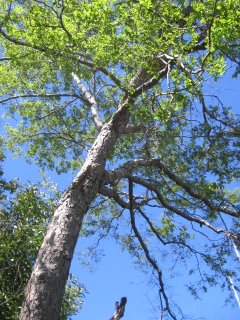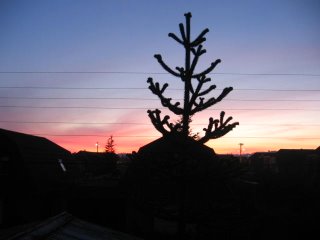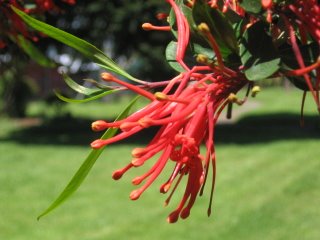Chile has many trees unique to the southern hemisphere or South America, as well as trees commonly found in most countries. This post will be continuously updated, so check back often.

Roble Beech (Latin: Nothofagus obliqua, Spanish: Roble)
The Roble Beech is a tall, fast growing, decidious tree native to Chile and Argentina.

Blue Gum Eucalyptus (Latin: Eucalyptus globulus, Spanish: Eucalipto Azul)
The Blue Gum Eucalyptus, although not native, is now widespread in Chile. Its native country is Australia, but is used extensively in plantations in Chile for timber and paper products, with the unfortunate effect of displacing native trees.
 Monterey Pine
Monterey Pine (Latin: Pinus radiata, Spanish: Pino de Monterey)
Like the Blue Gum Eucalyptus, the Montery Pine is a very common, non-native tree in Chile, which also displaces native trees in plantations. The Montery Pine is only native to California, but is the most commonly planted pine in the world.
 Monkey Puzzle
Monkey Puzzle or
Pehuén (Latin: Araucaria araucana, Spanish: Araucaria)
The Monkey Puzzle is native to Chile and Argentina, and is considered sacred by the Mapuche Indians. It is a coniferous evergreen, and is an example of a living fossil.
 Chilean Fire Bush
Chilean Fire Bush (Latin: Embothrium coccineum, Spanish: Notro)
The Chilean Fire Bush is a beautiful ornimental plant native to Chile, Argentina, and southern Peru. It is an evergreen, and flowers bright red, as seen in the picture. It is very common in Chile.













 Lake Pellaifa
Lake Pellaifa